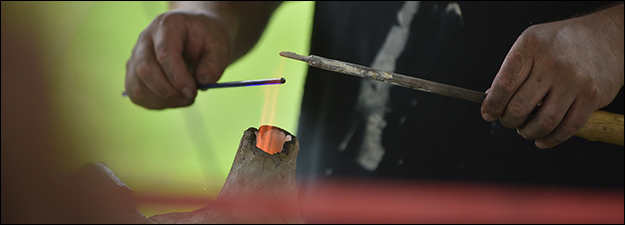Female Tricksters
Sponsoring Organization(s)
American Society of Irish Medieval Studies (ASIMS); Monsters: The Experimental Association for the Research of Cryptozoology through Scholarly Theory and Practical Application (MEARCSTAPA)
Organizer Name
Larissa Tracy, Asa Simon Mittman
Organizer Affiliation
Longwood Univ., California State Univ.-Chico
Presider Name
Sarah L. Higley
Presider Affiliation
Univ. of Rochester
Paper Title 1
The Vexing Problem of Corporeality and the Badb in Irish Bardic Poetry
Presenter 1 Name
Elizabeth Kempton
Presenter 1 Affiliation
St. Louis Univ.
Paper Title 2
A "Tretis" for Tricksters: Figuring the Female in Middle Scots Verse
Presenter 2 Name
Lucy R. Hinnie
Presenter 2 Affiliation
Univ. of Edinburgh
Paper Title 3
Tricky Nicolette and Her Unstable Identity
Presenter 3 Name
Ana Grinberg
Presenter 3 Affiliation
East Tennessee State Univ.
Start Date
13-5-2016 3:30 PM
Session Location
Bernhard 158
Description
The trickster, who conquers by cunning and not force, inhabits a complex moral/ethical world and seems to provoke a culture already steeped in cruelty and punishment in order to enact his/her own cruelty and punishment. The trickster in the “Beast Epic” gratifies his brute desires at the expense of others for fun and sadism, and is often punished for doing so in order to restore order to a damaged cultural body, but also to expose its injustices and hypocrisies. It has been suggested by Joan Acocella in the New Yorker that that the only kind of creature that can’t be a trickster is a woman, and yet medieval literature is rife with female tricksters of all kinds—particularly in fabliaux and Celtic fairy lore where the hero is defeated by a woman’s underhanded magic or rewarded by his ability to deal with her.
This session engages the challenge set forth by Acocella to locate and examine female tricksters in medieval culture. What role does the female trickster/monster play in it? The Morrígan of The Táin takes multiple animal shapes, as does Cerridwen of Welsh tradition. Acocella mentions Alison of The Miller’s Tale, but not the Wife of Bath or her model, La Vieille of Roman de la Rose; nor Dame Sirith; nor the monstrous loathly ladies in Irish and Middle English literature; nor the ugly, otherworldly woman in The Destruction of Da Derga's Hostel who brings down the hapless Conaire. Hags and widows are relentlessly portrayed as “cunning women.” Women of the Old French fabliaux beguile and trick their witless spouses and lovers through a variety of means. In short, female tricksters abound in the medieval literary traditions all over the world.
Female Tricksters
Bernhard 158
The trickster, who conquers by cunning and not force, inhabits a complex moral/ethical world and seems to provoke a culture already steeped in cruelty and punishment in order to enact his/her own cruelty and punishment. The trickster in the “Beast Epic” gratifies his brute desires at the expense of others for fun and sadism, and is often punished for doing so in order to restore order to a damaged cultural body, but also to expose its injustices and hypocrisies. It has been suggested by Joan Acocella in the New Yorker that that the only kind of creature that can’t be a trickster is a woman, and yet medieval literature is rife with female tricksters of all kinds—particularly in fabliaux and Celtic fairy lore where the hero is defeated by a woman’s underhanded magic or rewarded by his ability to deal with her.
This session engages the challenge set forth by Acocella to locate and examine female tricksters in medieval culture. What role does the female trickster/monster play in it? The Morrígan of The Táin takes multiple animal shapes, as does Cerridwen of Welsh tradition. Acocella mentions Alison of The Miller’s Tale, but not the Wife of Bath or her model, La Vieille of Roman de la Rose; nor Dame Sirith; nor the monstrous loathly ladies in Irish and Middle English literature; nor the ugly, otherworldly woman in The Destruction of Da Derga's Hostel who brings down the hapless Conaire. Hags and widows are relentlessly portrayed as “cunning women.” Women of the Old French fabliaux beguile and trick their witless spouses and lovers through a variety of means. In short, female tricksters abound in the medieval literary traditions all over the world.

